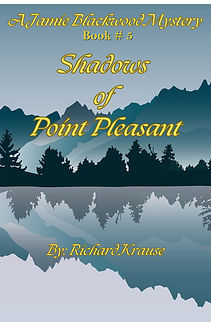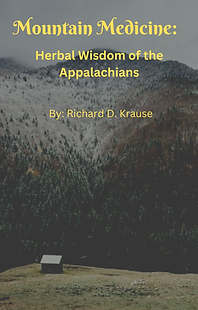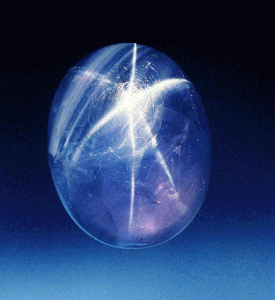To Post or not To Post..Hmmm.....
- Richard Krause
- Oct 7, 2018
- 4 min read
Good morning to all my peeps out there in internet land. Well except for a persistent hacking cough and generally feeling as if I had been pulled through a knot hole backwards, I think I may be on the mend. As I sit here consuming my favorite cup of life, I find that I am at a lost for what to write about this morning. Is this what they call writer’s block? I hope not, the thought of not being able to tell others what I think is absolutely frightening. Lord I hope I am not becoming “Depressed”.
Nope that’s not it just needed another cup of coffee!
So let’s continue on with our discussion on gemstones. Many of the world’s most beautiful gems can be found in the Smithsonian Institute in Washington, D.C. If you ever have the opportunity to tour it please do. It is well worth while.
The Smithsonian Collection
Some of the world’s most spectacular diamonds and other gems are located in the National Gem Collection in the Museum of Natural History in Smithsonian Collection in Washington, D.C. In the collection are diamonds known to almost everyone, such as the Hope Diamond, as well as other large diamonds and other precious gems and jewelry.
In the National Gem Collection are examples of spectacular minerals and crystals, as well gemstones and jewelry. You can see a beautiful purple quartz amethyst crystal, or the mineral azurite, which is a bright blue copper compound mineral. You can also see a huge green beryl crystal. Beryls are the mineral family that include emeralds, aquamarines, heliodor and morganite. It’s almost as exciting to see the raw crystal as it is to see the finished product when it’s been cut and polished.
Some of the finished pieces in the Smithsonian Collection include the crown Napoleon used for the second Empress, Marie Louise. It originally was made of 700 carats in diamonds and 79 emeralds. The emeralds have been replaced with Persian turquoise cabochons.
You can also see the 182-carat Star of Bombay star sapphire that was given to Mary Pickford by Douglas Fairbanks and a brilliantly colored black opal. Black opals are the most valuable of the opal family of gems.
There are also extraordinary examples of quartz crystals, including a 7,000 faceted clear quartz egg! Part of the Smithsonian’s collection includes pieces of jade and turquoise used in other cultures. This includes a collection of Zuni Indian turquoise jewelry and jade lanterns carved from nephrite for the Chinese emperor Chi’en Lung in 1750. A more modern piece is the Dragon Vase, carved from a rare piece of lavender jade.
But of course, the most dazzling items in the collection are the individual gemstones and jewelry that have been owned by royalty through the centuries.
Corundum
Corundum is the form of mineral from which sapphires and rubies are derived. The mineral is naturally clear, but can have different colors when impurities are present. Transparent corundum’s are used as gems, and if they’re red, then they’re rubies, while all other colors are called sapphire. The word corundum comes from the Tamil kurundam Due to corundum's hardness (typically 9.0) it is commonly used as an abrasive in machining, from huge machines to sandpaper. Emery is an impure and less abrasive variety, with a Mohs hardness of 8.0. You’ve probably used corundum hundreds of times when you’ve filed your nails with an emery board!
Corundum is actually the second hardest substance on the earth, after the diamond, and as such has many industrial uses. Corundum is crushed, ground and screened to varying grain sizes. The grains are utilized in the manufacture of grinding wheels for flour and rice mills, and workshops. Grinding wheels are manufactured either by a mixture of corundum, clay and feldspar or by using sodium silicate as a bonding agent. Finer grains are utilized for the preparation of grinding-pastes for the automobile industry. Corundum paper and cloth finished to belts, discs, rolls, sheets and other shapes are prepared by giving a suitable coating generally of sodium silicate.
Due to its hardness corundum also finds use in mortars, wire drawing dies, thread guides and gauge blocks. Gem varieties are sometimes used for pivot supporters in delicate scientific instruments, as jewel bearing in watches.
Corundum in small quantities is used in the manufacture of special sparking plugs, mufflers, pyrometer tubes, rods and insulators for vacuum tubes of all kinds. Finely ground corundum, passing through 200 mesh, is used for the manufacture of the above products by giving them a bond of clay.
The American Topaz
The world’s largest cut topaz, called the American Topaz, resides at the Smithsonian Institution in Washington, DC. A 172-faceted topaz weighing 22,892.50 carats (5785 kg), it’s the largest cut yellow topaz in the world, and one of the largest faceted gems of any kind in the world. Originating from Minais Gerais, Brazil, it was cut over a period of two years. It was purchased by the Rockhound Hobbyists of America and presented to the Smithsonian Institution in 1988.
As stunning as this cut topaz is, another display at the Smithsonian is equally dazzling and awe-inspiring. That’s a sherry-colored topaz “spray” from the Thomas Range in Utah. This color of topaz can be found in Mexico and Utah, but when it’s exposed to sunlight, will become clear.
Other spectacular displays of natural crystals include a cluster of Stibnite, an ore of antimony, which has a bright metallic luster. This spectacular group of crystals is from Iyo, Japan and look like something from Superman’s home!
Another huge mineral in the exhibit is the Smithsonite, named for James Smithson, who bequeathed the funds to establish the Smithsonian Institution. He first discovered this greenish zinc carbonate mineral from the Kelly Mine in New Mexico.
Some of the other don’t miss items in the Smithsonian’s Gem Collection are the Smithsonian Canary Diamond, a huge canary and diamond ring. The 98.6-carat Bismarck Sapphire is also part of the collection and is one of the world’s largest sapphires. It originally came from Sri Lanka. It’s also fascinating to see some of these gems in their raw uncut state, such as the large corundum crystal which is the mineral that sapphires are made of, and a very large beryl crystal, from which the emerald and aquamarine family of stones is derived.
Well I guess that pretty well covers it for today. I truly love gemstones, the beauty of nature just never fails to amaze me.
Have a wonderful day and week, and may the Great Architect of the Universe forever keep you safe as you travel down life's path


























Comments